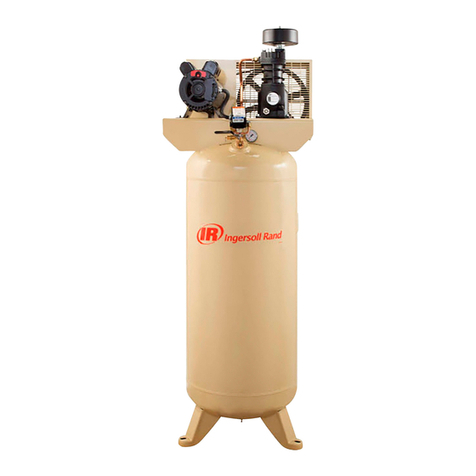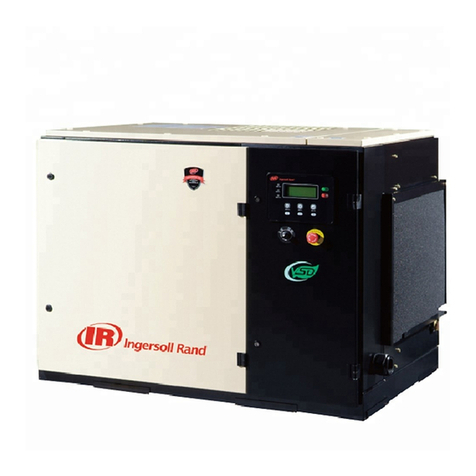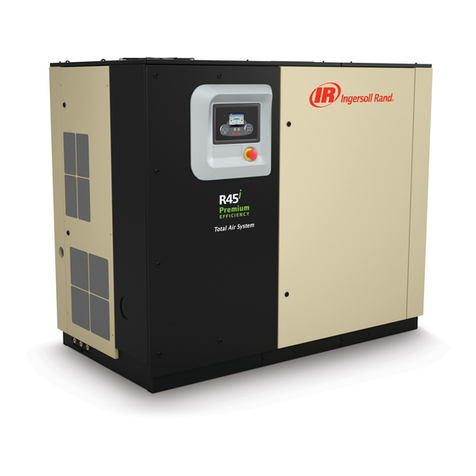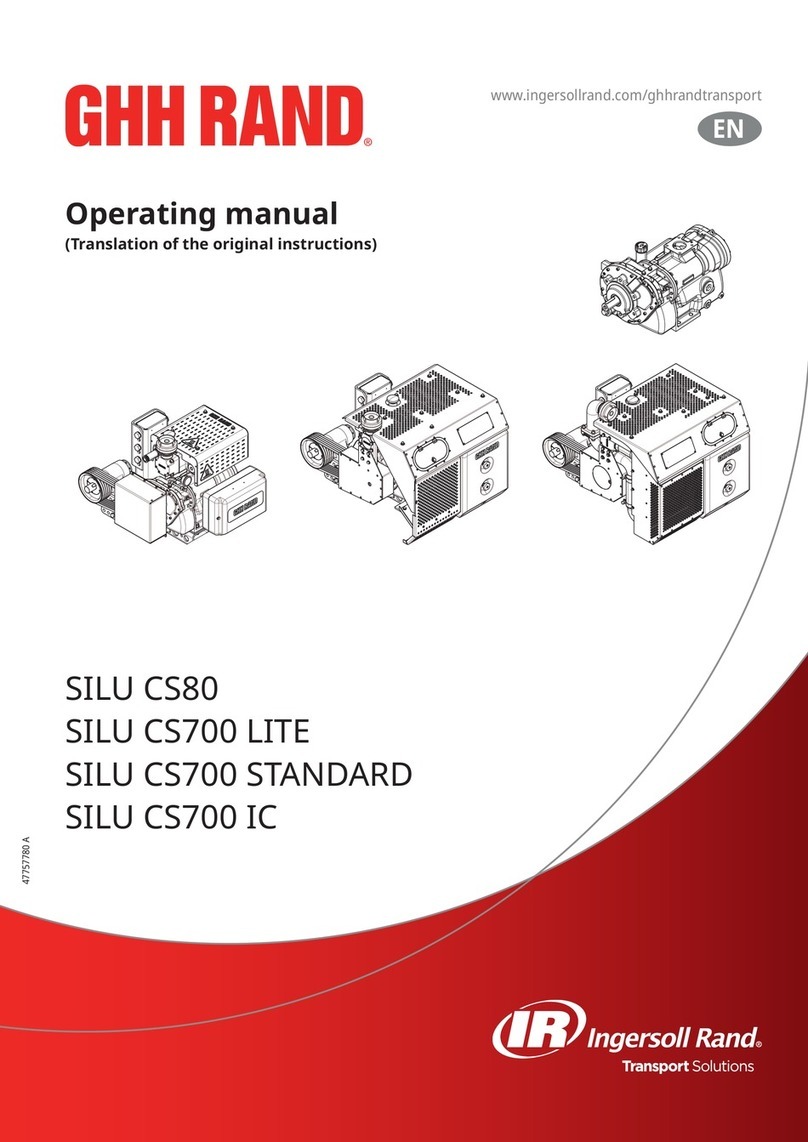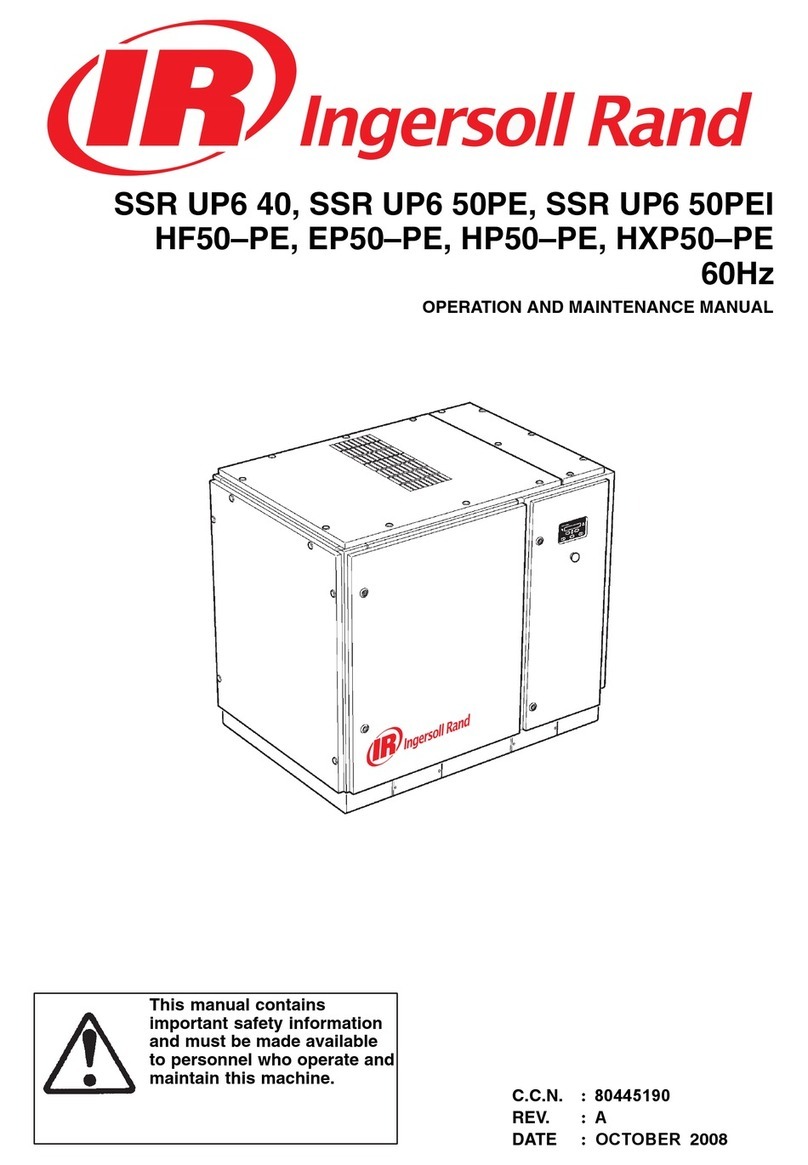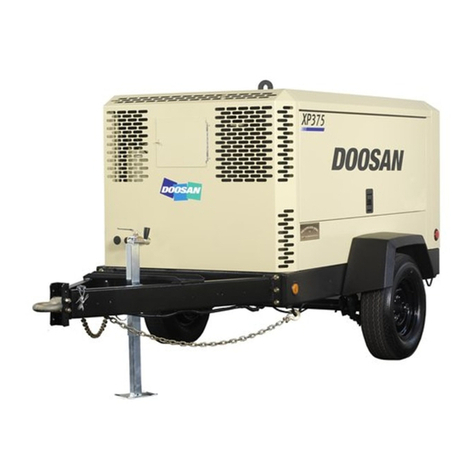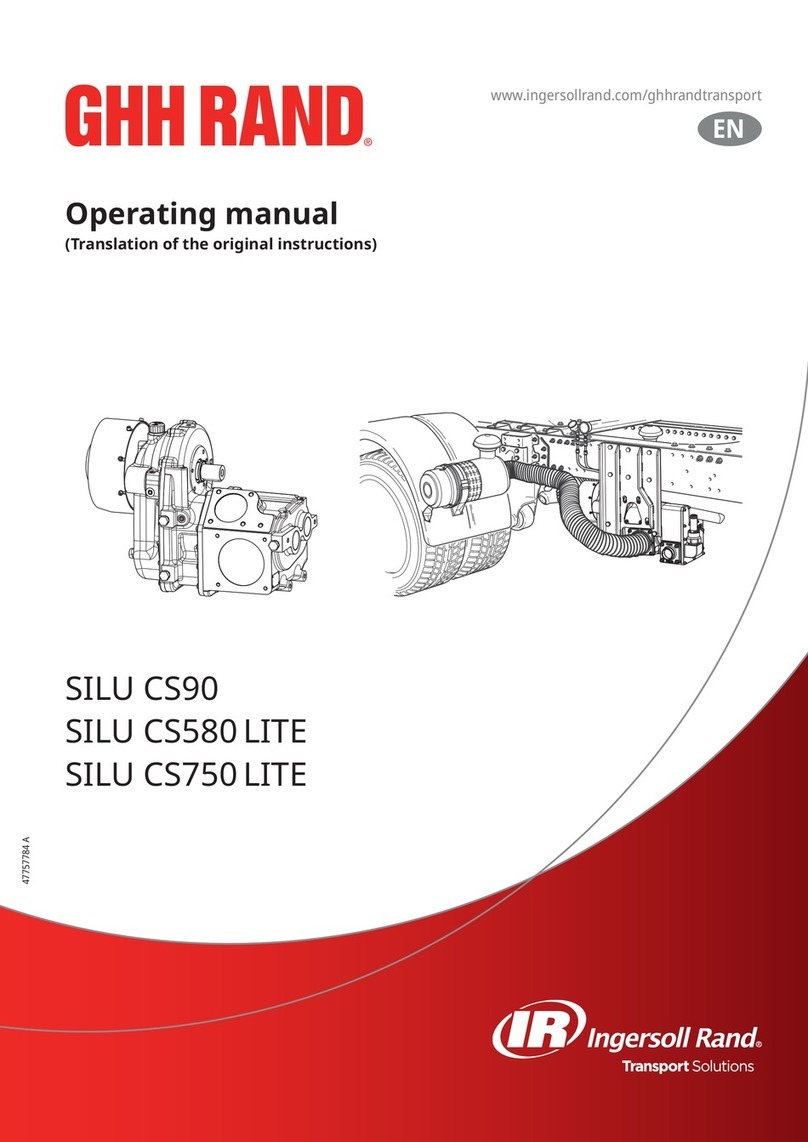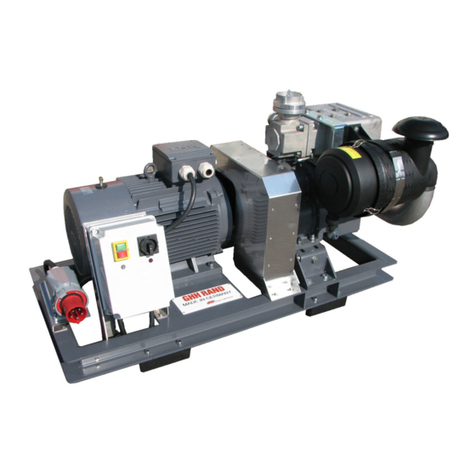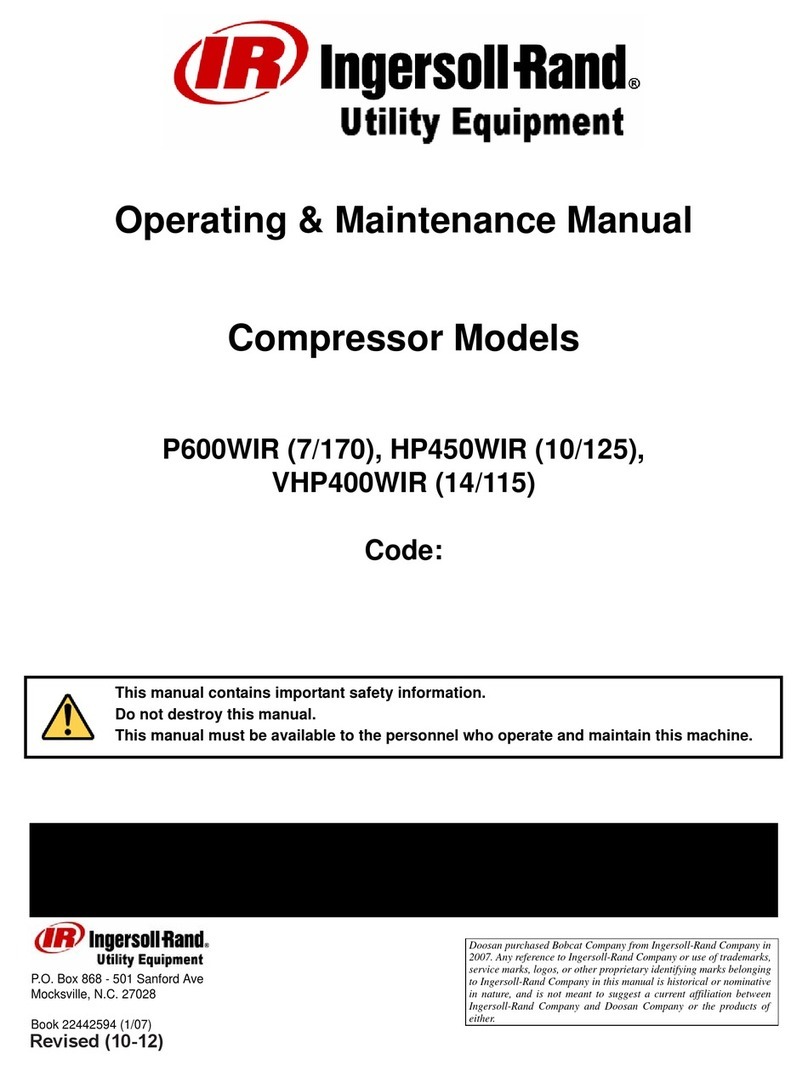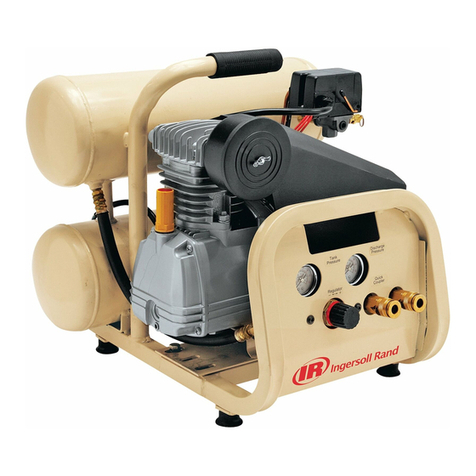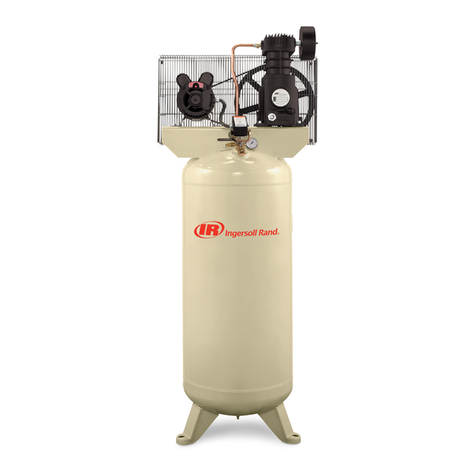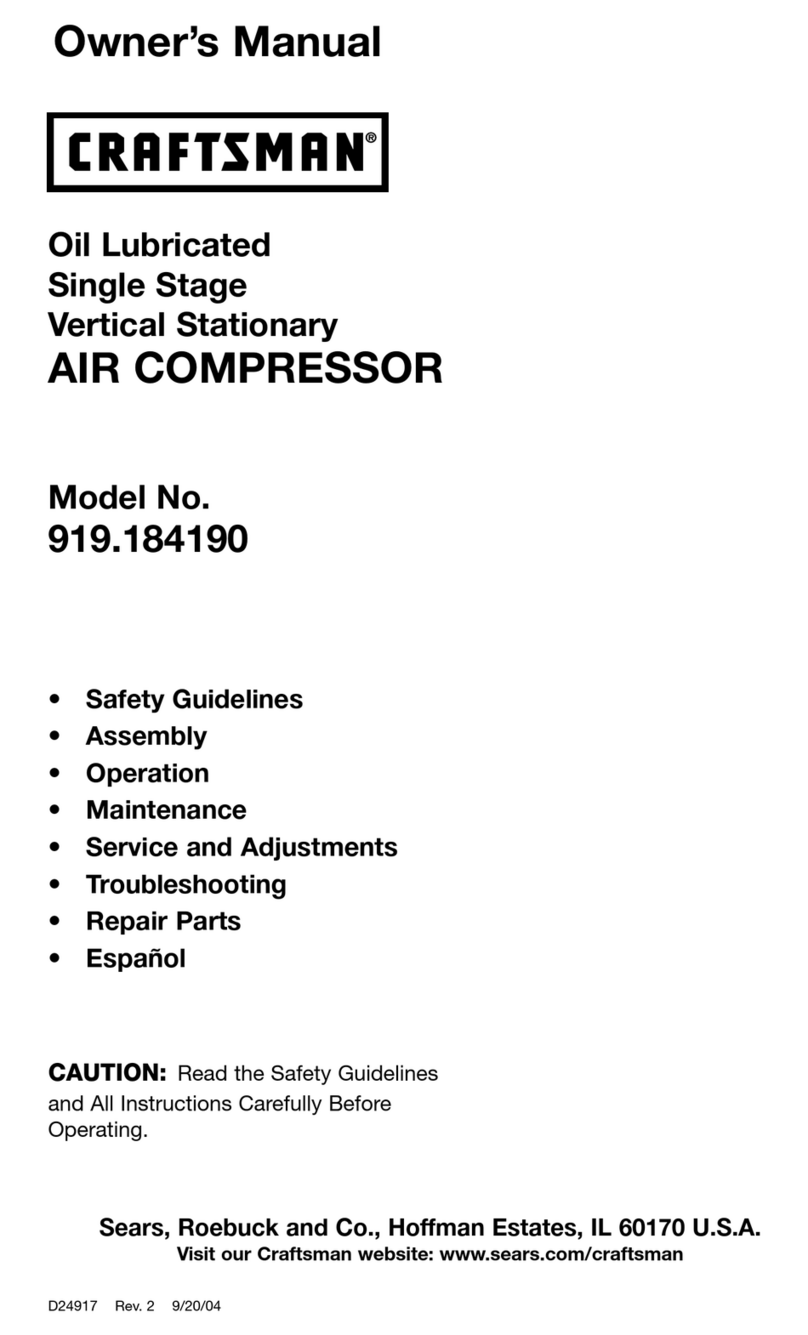
EN
10 80448608 Rev B
of wiring from a suitable electrical feed point is critical
as voltage drops may impair the performance of the
compressor.
Cable sizes may vary considerably so the mains terminals
will accept up to 50mm2(1 AWG) (37/45k & 50/60H) and
up to 90mm2(3/0 AWG) (55/75k & 75/100H) cable. The
N75K−160K and N100H−200H machines mains terminals
will accept 2 x 120mm2 (4/0 AWG) cables.
Feeder cable connections to incoming terminals L1−L2−L3
should be tight and clean.
The applied voltage must be compatible with the motor and
compressor data plate ratings.
The control circuit transformer has dierent voltage tappings.
Ensure that these are set for the specic applied voltage prior
to starting.
A hole is provided for incoming power connection. If it is
necessary to make a hole in the control box in a dierent
location, care should be taken to not allow metal shavings to
enter the starter and other electrical components within the
box. If another hole is used, the original hole must be blocked
o.
The feeder cable must be suitably glanded into the power
drive module (P.D.M.) electrical box to ensure that dirty air
does not by−pass the lter pads or degrade the cooling air
ow.
On completion of electrical installation, check that both the
main blower motor and heat sink blower motor rotations are
correct.
This machine is designed for use in heavy industrial
environments, where the electricity supply is separated from
nearby residential and commercial areas. If the machine is
to be used in the light industrial, residential or commercial
environment where the local supply network is shared,
further radio frequency (RF) screening measures may be
required. Consult your local distributor/supplier for details of
the optional RF lter.
The compressor has a anti−condensation heater and
thermostat in the electrical box. This circuit can be connected
to an independent electrical supply of either 110V or 230V
single phase, dependant on the country of installation. The
supply should be suitable fused and an independent isolator
installed adjacent to the compressor.
This should be done in accordance with local and national
codes. It is good practice and sometimes mandatory, to
display suitable signs warning that the machine has two
separate electrical supplies which both must be isolated
before any work is attempted.
Alternately it can be supplied from the 110V tapping of the
control transformer and connected as shown on schematic
wiring diagram.
CAUTION
VERY IMPORTANT
Supply voltage must be kept to a maximum imbalance
of 2% on 50Hz and 3% on 60Hz applications. Voltage
imbalances greater than these levels can cause
permanent damage to the drive.
Compressor must not be subjected to any voltage
spikes or surges in excess of 575V. Exposure to spikes/
surges in excess of 575V can permanently damage the
drive. If the possibility of such exists it is recommended
that adequate surge protection is tted such as an
Ingersoll Rand line reactor. See your local
Ingersoll Rand representative.
Failure of the drive due to voltage spikes, line notching,
harmonics or other power quality related problems, will
not be covered by the standard compressor warranty.
The correct type and rating of line input fuse MUST BE
tted onto the customers isolator or breaker close to
the compressor.
CAUTION
This procedure should only be carried out by a qualied
electrician, electrical contractor or your local
Ingersoll Rand Distributor or Air Centre.
The compressor installation must be properly installed in
accordance with recognized Local and National electrical
equipment installation codes and any other related local
Health and Safety Codes.
The compressor input power supply (branch circuit)
protection shall be made by utilizing an Isolator switch
(Disconnect switch). The input power supply branch
circuit shall only be protected using“FAST ACTING (FAST
BLOWING)” fuses as dened below, and NOT using“Time
Delay” (slow acting or dual element type) fuses.
INSTALLATION
RELEASED 06
Feb
2018 13:48:37 GMT
